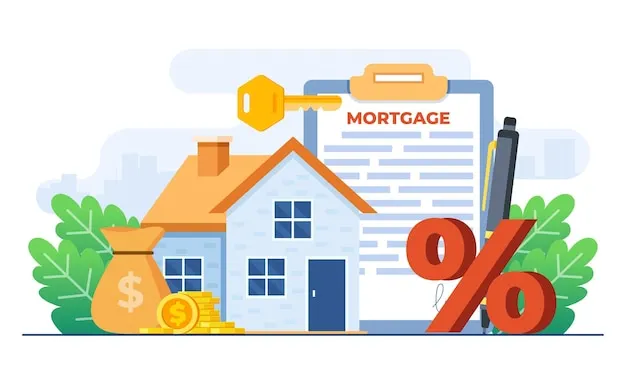Buying a home is one of the most significant financial decisions you’ll ever make. One of the first choices you’ll face when applying for a home loan is deciding between a fixed-rate mortgage (FRM) and an adjustable-rate mortgage (ARM). Each option has its own advantages and drawbacks — the right choice depends on your financial situation, goals, and risk tolerance.
In this guide, we’ll explain the key differences between fixed and adjustable-rate mortgages, their pros and cons, and how to decide which one fits your needs best.
🔹 What Is a Fixed-Rate Mortgage?
A fixed-rate mortgage has an interest rate that remains the same throughout the entire loan term — whether that’s 15, 20, or 30 years. Your monthly principal and interest payments never change, providing stability and predictability.
✅ Benefits of a Fixed-Rate Mortgage:
- Predictable payments: Your interest rate and monthly payments remain constant.
- Long-term stability: Ideal if you plan to stay in your home for many years.
- Protection from rate hikes: You’re unaffected by rising market interest rates.
⚠️ Drawbacks:
- Higher initial interest rate: Fixed-rate loans usually start higher than adjustable ones.
- Less flexibility: If market rates fall, you won’t automatically benefit unless you refinance.
🔹 What Is an Adjustable-Rate Mortgage (ARM)?
An adjustable-rate mortgage starts with a fixed interest rate for a certain period (e.g., 5, 7, or 10 years). After that, the rate adjusts periodically based on market conditions.
For example, a 5/1 ARM means your rate is fixed for the first 5 years, then adjusts once per year thereafter.
✅ Benefits of an Adjustable-Rate Mortgage:
- Lower initial rates: ARMs often start with lower interest rates than fixed-rate loans.
- Potential savings: If rates stay low, you may pay less overall.
- Short-term suitability: Great for buyers who plan to move or refinance before the adjustment period.
⚠️ Drawbacks:
- Unpredictable future payments: Rates can rise, leading to higher monthly payments.
- Complex terms: Understanding caps, margins, and indexes can be confusing.
- Higher risk: Not ideal for those on a tight or fixed income.
🔹 Key Differences Between Fixed and Adjustable-Rate Mortgages
| Feature | Fixed-Rate Mortgage | Adjustable-Rate Mortgage |
|---|---|---|
| Initial Interest Rate | Higher | Lower |
| Rate Stability | Constant | Changes after initial period |
| Monthly Payments | Predictable | Can increase or decrease |
| Best For | Long-term homeowners | Short-term homeowners |
| Risk Level | Low | Moderate to high |
🔹 Which Mortgage Type Is Right for You?
Choosing between a fixed or adjustable-rate mortgage depends on your financial goals and timeframe.
- Choose a Fixed-Rate Mortgage if:
- You want stability and predictable payments.
- You plan to live in your home for 10+ years.
- You prefer long-term protection from rising rates.
- Choose an Adjustable-Rate Mortgage if:
- You plan to sell or refinance within a few years.
- You expect interest rates to remain stable or decline.
- You want lower initial payments to improve cash flow.
🔹 Expert Tip: Consider Market Conditions
If interest rates are historically low, locking in a fixed-rate mortgage makes sense. However, if rates are high and expected to drop, an adjustable-rate mortgage could help you save money in the short term. Always consult with a mortgage advisor before making a final decision.
🔹 The Bottom Line
When comparing fixed vs. adjustable-rate mortgages, there’s no one-size-fits-all answer. A fixed-rate mortgage offers peace of mind and long-term stability, while an adjustable-rate mortgage provides flexibility and potential short-term savings.
Before committing, assess your financial stability, how long you plan to stay in your home, and your comfort level with risk. The right choice will help you save money and achieve your homeownership goals with confidence.

